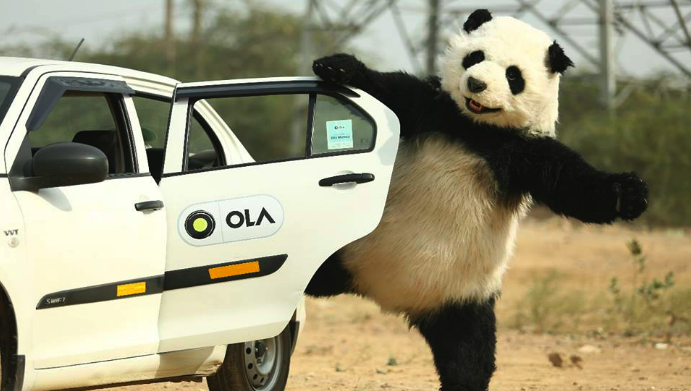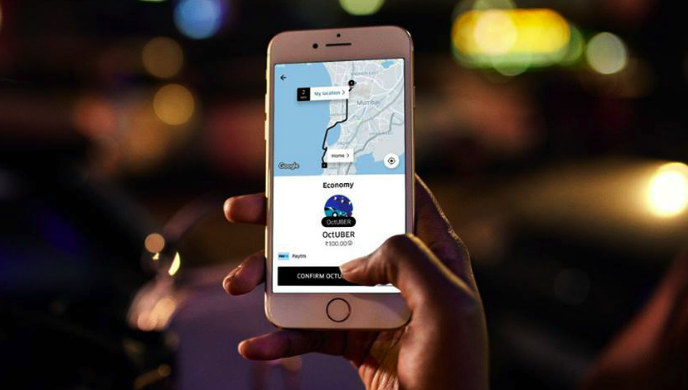Instead of bleeding more money in markets, where achieving profitability is an impossible task, getting an exit and focussing on the core markets is a more intelligent move

After the high-profile deals with Didi in China in 2016 and Yandex in Russia in 2017, Uber has just announced that it has sold its Southeast Asian business to Grab, its close rival in the region.
The global ride-hailing behemoth’s strategy is very clear: to exit from the markets where the battle is too costly and the stakes are too high, and instead focus all energy and resource on selective markets — before going all out for a blockbuster IPO, which is already in the works.
Experts believe that by selling local business units in Russia and China, Uber has done a damn good job because it has realised that instead of bleeding more money in markets, where achieving profitability is an impossible task, getting an exit and focussing on the core markets is a more intelligent move.
Going by this strategy, in all probability, Uber’s next big move will be in the Middle East. It is highly likely to exit in the Middle East, a relatively small market which is already dominated by local player Careem.
But what will be Uber’s plans in India? Will it adopt a similar strategy selling its local unit to rival Ola? Will their common investor SoftBank force a deal here as well?
It is complicated, say all the experts who e27 spoke to for this story. No one is in a position to make a guess as to what kind of plans Uber has for India, a key market where 10 per cent of its total rides comes from, but profitability is a distant dream.
Also Read: Grab acquiring Uber’s data trove is a major red flag. Here’s why
“At this point, it’s hard to say what will happen in India. One way to look at things is that Uber is reducing its footprint to those areas, where it has significant share and a reasonable chance to emerge as a strong player. If one takes this view, then one can argue that by withdrawing from China and Southeast Asia, Uber is only strengthening its capability to focus on geographies like India, and we’ll see an intensification of the battle,” observes Samir Kumar, Managing Director of Inventus Capital Partners (India), a global venture capital firm.
“The other viewpoint could be that Uber is cutting its losses, in which case a withdrawal from India can’t be ruled out. I don’t have the soothsayer skills needed to say which viewpoint will play out,” he adds.
For sure, India is highly complicated market. While many major consumer internet companies, including Flipkart, Amazon, Facebook are bleeding profusely in India, the massive opportunities the market offers is too big to miss.
The San Francisco-headquartered company is perhaps in a quandary as to whether to strike a deal with Ola by selling its domestic operations to the local competitor or to go and acquire it, or look for a merger — so that it can check the growing cash burn, and then proceed with its grand plans of delivering a multi-billion IPO in the next 18-24 months.
K Vaitheeswaran, an veteran internet entrepreneur and author of Failing to Succeed – the story of India’s first e-commerce company, believes that Uber will eventually strike a deal with Ola. “Uber’s goals may have changed. I think the new CEO Dara Khosrowshahi’s job is to deliver a blockbuster IPO. The firm is no longer interested in winning or having a large cab-hailing business on their own, as opposed to having a financially successful and resounding IPO company. So, I won’t be surprised if they strike a deal with Ola, something similar to a deal with Grab.”
Also Read: Yoma Strategic to provide vehicle leasing, financing options to Grab’s drivers in Myanmar
But Vaitheeswaran doesn’t rule out the possibility of Uber continuing its battle in India. “Can Uber beat Ola? I think they can. Since India is not too costly a battle, they may take, say, a seven-year battle with Ola, which is cheaper than an exit. But all this depends on how much money they have in India and whether they genuinely think they can beat Ola.”
The tech veteran equates Uber’s battle to the World War II. “The closest analogy I can think is a WW-II. Hitler would have won Europe, had he not gone to Russia. He was on a winning spree and could have won Europe and beaten the ally. But suddenly he became greedy. He thought if he could win England, France and America, he could take on Russia, too. Uber is in a very similar situation here. They are fighting all the battles. They suddenly realise that if they can fight in the Middle East, Southeast Asia, India and then Latin America, they would keep losing more and more money.”

Nitin Sharma, an active angel investor and ex-founding Principal at Lightbox Ventures, says Uber under new leadership seems to be following a far more pragmatic path towards creating realistic IPO prospects.
“On the other hand, investments in self-driving cars and other core technologies through its Advanced Technologies Group (ATG) programmes will remain critically important for Uber. Moreover, Lyft has proven itself to be a formidable competitor in the US. The unit economics in Asia require a much longer time horizon to contribute profitability to the whole organisation. You put all this together with SoftBank as a common investor, and striking these deals (e.g. Grab or Ola) becomes the rational course to avoid bleeding for market share,” he adds.
“It’s game theory, a logical peace treaty to end a costly war, and a step towards protecting IPO plans above the private market valuations,” he says.
Also Read: Travis Kalanick to launch venture fund ‘10100’ targeting India, China
500 Startups’s former Partner Pankaj Jain, too, believes that there’s a very good chance that there will be some consolidation in India. SoftBank is an investor in both companies and that they would prefer the two investments to work together rather than compete in India.
“Whether Uber exits by selling its operations to Ola or Uber acquires Ola is hard to say without intimate internal knowledge. However, I would bet on consolidation,” he adds.
“I think they have bought themselves some time to right the ship in order for an IPO, however, I think they will need to file for an IPO late this year or early next year, assuming the US IPO market stays open. The recent Dropbox IPO has given tech investors some confidence to push out more tech IPOs,” Jain adds.
According to K Ganesh, a serial entrepreneur and Partner at Growthstory.in, given the recent comments made by Khosrowshahi, exiting from India looks unlikely in the short term. “However, it would be naive to assume such options are not being looked at by the investors on both sides,” he notes.
But isn’t a deal with Ola is better, given the fact that the firm is losing millions by offering discounts and promotions?
“Not really,” adds Ganesh. “Ola is also losing money per ride, and both are targeting market share and expanding the market through geographical coverage. Both have seen great uptick in adoption as there is primary need, although currently driven by good discounts/deals.”
“Another way to look at it is that with Uber exiting other markets, they have more energy, focus and capital to focus on India. So they can try and dominate free Asian markets with their full force rather than spread thin across multiple geographies. One needs to be an insider to know their thinking and this may also evolve over the next couple of years,” he continues.
For Samar Singla, Founder and CEO of Jugnoo, a leader in the online auto-rickshaw aggregation space, a deal between Uber and Ola is unavoidable. “I think SoftBank is the deal maker here. They have significant shareholding in both Uber and Ola. I think they should try to sell of Uber India business to Ola and focus on the US market, but the issue is that how they can Uber justify the US$50 billion valuation. Anyway, India is the growth story. In the sense, that Ola would be acquiring Uber India.”
He also feels a deal is already in the works. “It should be definitely happening. The thing is that it took two months to finalise the Grab deal, and several months to fix China and Russia deals. So it may take sometime before they sign a deal with Ola.”
According to another investor, a merger of operations is the only way forward for both companies on a mutual understanding of giving Uber a stake in the combined entity. “It is impossible for Ola to buy the local business of Uber, which is currently valued at US$70 billion. On the flip side, it will not make sense for Uber to buy Ola by spending US$5 billion that Ola wants. So only practical way is a merger of operations,” says the investor, who prefers to be anonymous.
So Uber’s decision on India depends on several factors.
Anyway, whatever deal they strike, the ultimate loser is going to be the end customer.
“In general, deals between competitors (collusion/price fixing, etc.) work for the parties involved, but they are bad for consumers. And in most markets, deals that create monopolies are frowned upon by the regulators,” says Inventus’s Kumar.
The post ‘It’s complicated’: Experts weigh in on the possibility of Uber striking a deal with India’s Ola appeared first on e27.